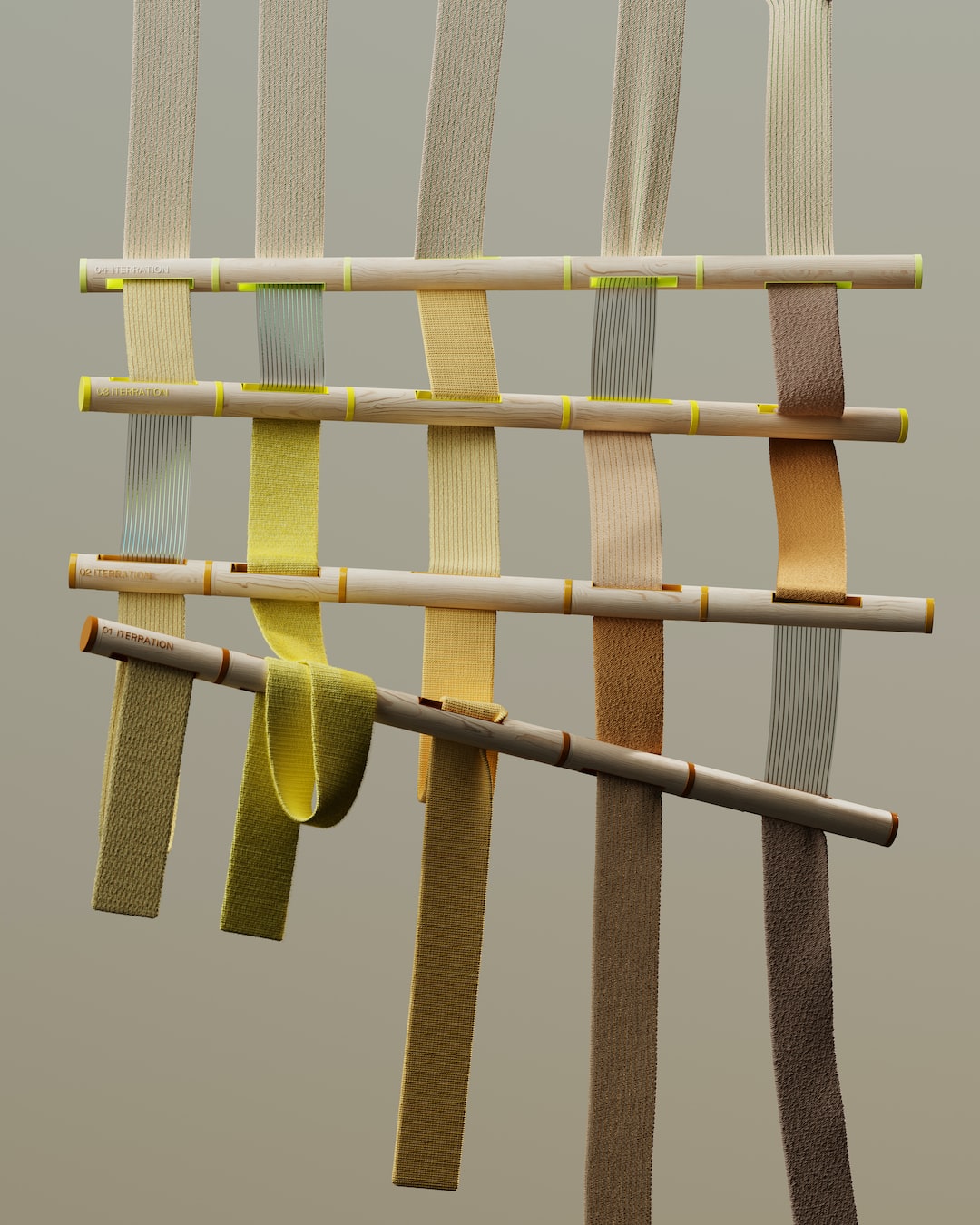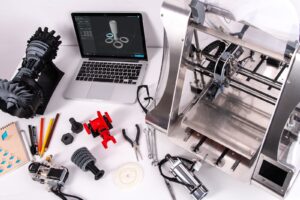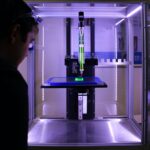Support our educational content for free when you purchase through links on our site. Learn more
What is a 3D Printer? A Comprehensive Guide to 3D Printing [2023]

Welcome to our comprehensive guide to 3D printing! Whether you're a beginner or an experienced enthusiast, we've got you covered. In this article, we'll explore what 3D printing is, how it works, its applications, the different types of 3D printing technologies, and the materials used. We'll also answer some common questions and provide useful tips and facts along the way. So let's dive in and explore the fascinating world of 3D printing!
Table of Contents
- How Does 3D Printing Work?
- Applications of 3D Printing
- Materials Used in 3D Printing
- FAQ: Answers to Common Questions
- Quick Tips and Facts
- Useful Links
- Reference Links
How Does 3D Printing Work?
A Brief Overview of the Process
Before we delve into the intricacies of 3D printing, let's start with a brief overview of how the process works. At its core, 3D printing involves turning a digital design into a physical object. This is achieved by breaking down the design into thin layers and then systematically building each layer to create a three-dimensional object.
The typical 3D printing process consists of the following steps:
-
Designing: The first step involves creating a digital 3D model using computer-aided design (CAD) software or 3D modeling programs. This design can be created by individuals, businesses, or even downloaded from online repositories.
-
Slicing: Once the design is ready, specialized software slices the 3D model into numerous thin horizontal layers, typically ranging from 0.05 to 0.3 millimeters thick. This step prepares the design for the printing process.
-
Setup: After slicing, the 3D printer needs to be prepared. This includes leveling the build plate, ensuring the correct filament or material is loaded, and calibrating the printer parameters, such as temperature and print speed.
-
Printing: With all preparations complete, the 3D printer starts the printing process. It utilizes one of several 3D printing technologies, which we'll explore in more detail in the next section. The printer deposits the material layer by layer, following the instructions provided by the sliced design.
-
Post-processing: Once the printing is complete, the object may require some post-processing. This can involve removing support structures, sanding rough edges, or applying a finish to achieve the desired appearance.
Types of 3D Printing Technologies
There are several 3D printing technologies available today, each with its unique advantages and applications. Let's take a closer look at some of the most commonly used technologies:
| Technology | Description |
|---|---|
| Fused Deposition Modeling (FDM) | This is the most popular and affordable 3D printing technology. It works by extruding a thermoplastic filament through a heated nozzle, which then layers the material to build the object. FDM printers are widely used by hobbyists, educators, and small businesses. |
| Stereolithography (SLA) | SLA printers use a liquid photopolymer resin that is cured (solidified) layer by layer using a UV laser. This technology provides excellent detail and surface finish, making it popular in industries such as jewelry, dentistry, and prototyping. |
| Selective Laser Sintering (SLS) | SLS printers employ a high-powered laser to selectively fuse powdered materials, such as nylon, into solid objects. This technology offers exceptional strength and durability, making it suitable for functional prototypes and end-use parts in industries like aerospace and automotive. |
| Digital Light Processing (DLP) | DLP printers, similar to SLA, use photopolymer resins. However, instead of a laser, they employ a digital micromirror device to project UV light, curing entire layers simultaneously. DLP printers can produce parts quickly and maintain a good level of detail. |
These are just a few examples of the many 3D printing technologies available. Each technology has its strengths and limitations, so it's essential to choose the one that best fits your specific requirements.
Applications of 3D Printing
The versatility of 3D printing has led to its integration into a wide range of industries and applications. Here are some notable examples:
1. Prototyping and Product Development: 3D printing allows designers and engineers to rapidly create prototypes and iterate on designs, speeding up the product development cycle.
2. Manufacturing: Additive manufacturing, an alternative term for 3D printing, is becoming increasingly popular in manufacturing industries. It enables the production of complex geometries that would be difficult or impossible to achieve with traditional manufacturing methods.
3. Education: 3D printers are finding their way into classrooms, offering a hands-on approach to learning and fostering creativity in students. They can be used to bring concepts to life and aid in visualizing complex ideas.
4. Healthcare: The medical field has embraced 3D printing for various purposes, including creating patient-specific anatomical models for surgical planning, producing custom prosthetics and implants, and even printing living tissues and organs for transplantation research.
5. Architecture and Construction: 3D printing allows architects and construction professionals to create intricate models, test designs, and even produce components for building structures, reducing costs and construction time.
This is just the tip of the iceberg when it comes to the applications of 3D printing. As the technology continues to advance, its potential will only grow.
Materials Used in 3D Printing
3D printers can work with a wide range of materials, including plastics, metals, ceramics, and even biocompatible materials. The choice of material depends on the intended application and the capabilities of the 3D printer being used. Let's explore some commonly used materials:
1. PLA (Polylactic Acid): PLA is a biodegradable and environmentally friendly thermoplastic derived from renewable sources such as cornstarch or sugarcane. It's easy to print with and has a wide range of applications, including prototyping, figurines, and household items.
2. ABS (Acrylonitrile Butadiene Styrene): ABS is a durable and impact-resistant thermoplastic commonly used in industrial applications. It requires stable printing conditions, such as a heated bed, to prevent warping. ABS is suitable for functional parts, automotive components, and electronic enclosures.
3. PETG (Polyethylene Terephthalate Glycol): PETG offers a balance between the ease of printing of PLA and the durability of ABS. It is known for its excellent layer adhesion, toughness, and resistance to moisture. PETG is often used for mechanical parts, containers, and medical applications.
4. Nylon: Nylon is a versatile and robust material known for its strength and flexibility. It's frequently used in applications that require functional prototypes, tooling, and end-use parts. Nylon can be challenging to print due to its high melting temperature and tendency to absorb moisture.
5. Metal: Metal 3D printing, also known as additive manufacturing, enables the production of complex metal parts. Common metal materials used include stainless steel, titanium, aluminum, and nickel alloys. Metal 3D printing finds applications in aerospace, medical implants, and customized jewelry.
These are just a few examples of the materials available for 3D printing. As the technology advances, more and more materials are becoming accessible, opening up new possibilities for designers and manufacturers.
FAQ: Answers to Common Questions
What is a 3D printer used for?
A 3D printer is used to turn digital designs into physical objects by layering materials to build three-dimensional structures. It finds applications in various fields such as prototyping, manufacturing, education, healthcare, and architecture. With 3D printing, the possibilities are virtually endless!
Can a 3D printer print anything?
While 3D printers can produce a wide range of objects, there are limitations to what they can effectively print. Factors like the printer's technology, build volume, and material compatibility influence what can be printed. Complex geometries, intricate details, and functional parts can often be printed successfully.
How much does it cost to get a 3D printer?
The cost of a 3D printer can vary greatly depending on various factors such as the technology, build volume, and features. Entry-level desktop printers can range from $200 to $2,000, while industrial-grade printers can cost tens of thousands of dollars. It's essential to consider your specific needs and budget when choosing a 3D printer.
What materials can be used in 3D printing?
3D printers can work with a wide range of materials, including plastics (PLA, ABS, PETG), metals (stainless steel, titanium, aluminum), ceramics, and even biocompatible materials. Each material has its unique properties and suitability for specific applications. The choice of material depends on the desired outcome and the capabilities of the 3D printer.
How long does 3D printing take?
The printing time can vary depending on the size and complexity of the object, as well as the chosen print settings. Simple objects can take a few minutes, while larger, more intricate designs can take several hours or even days to complete. It's important to consider print time when planning a 3D printing project.
Quick Tips and Facts
- 3D printers can create objects with intricate designs and complex geometries that would be challenging to produce using traditional manufacturing methods.
- Before starting a 3D printing project, ensure that your printer is properly calibrated and leveled to ensure accurate prints.
- Experiment with different materials and print settings to achieve the desired strength, surface finish, and functionality for your printed objects.
- Consider post-processing techniques such as sanding, painting, or applying a finish to enhance the appearance and quality of your prints.
- Stay up to date with the latest advancements in 3D printing technology and materials to unlock new creative possibilities and applications.
Useful Links
- Best 3D Printer Awards™
- Buy 3D Printers on Amazon
- Buy 3D Printers on Walmart
- Buy 3D Printers on Etsy
- 3D Printing News
- 3D Printing YouTube Channel
- Recommended Book: "The 3D Printing Handbook"





